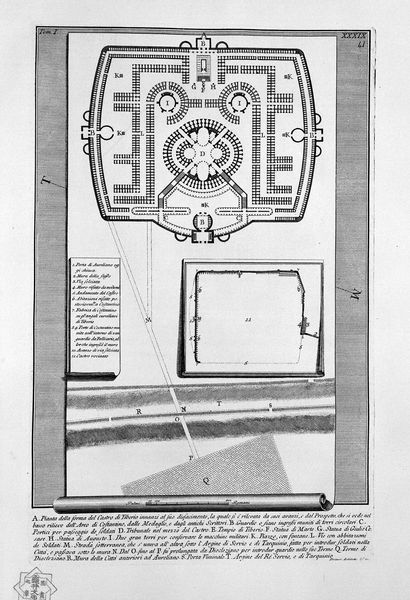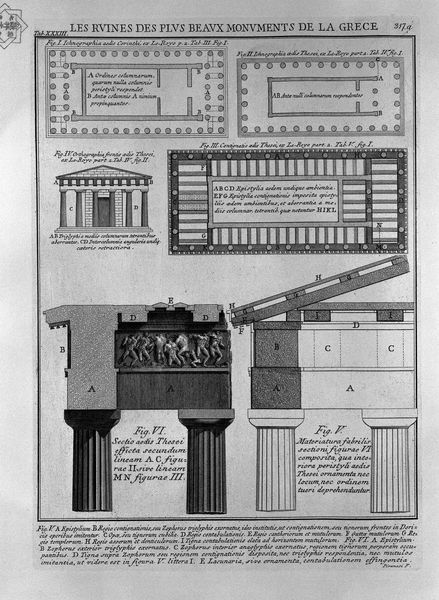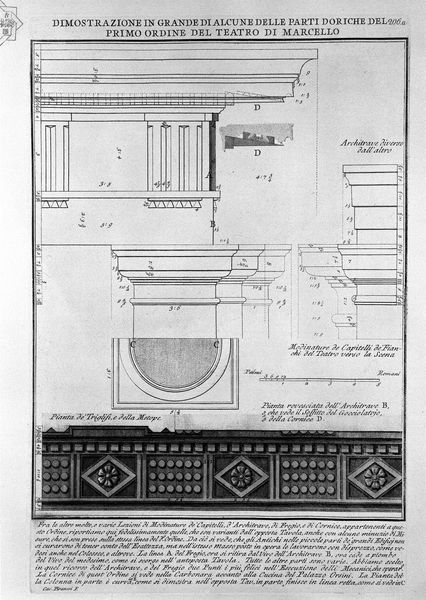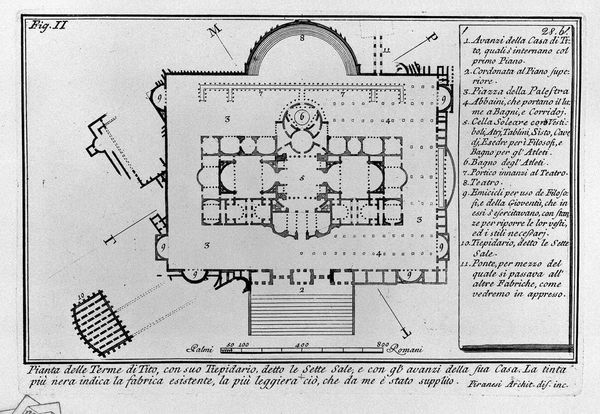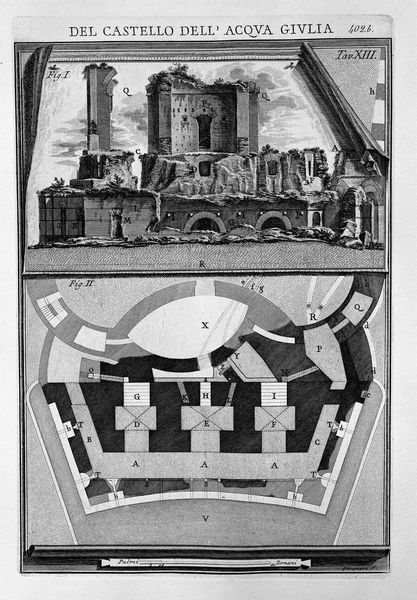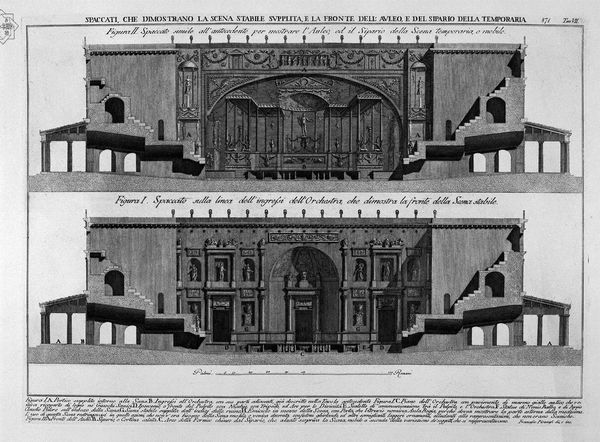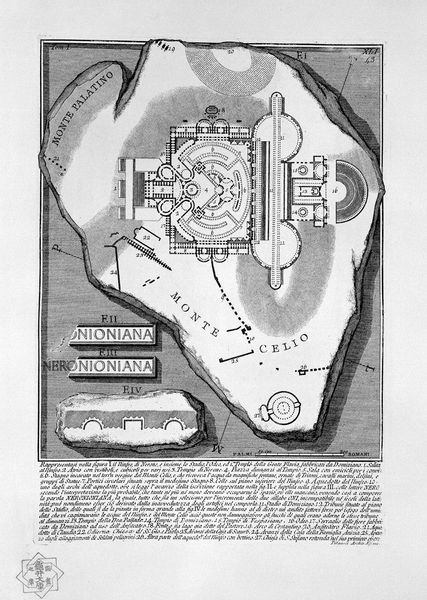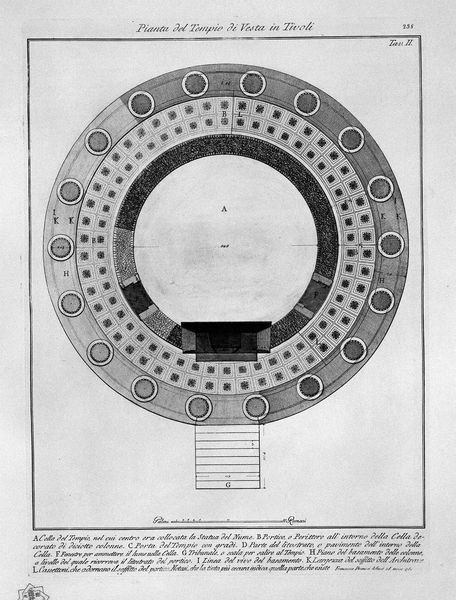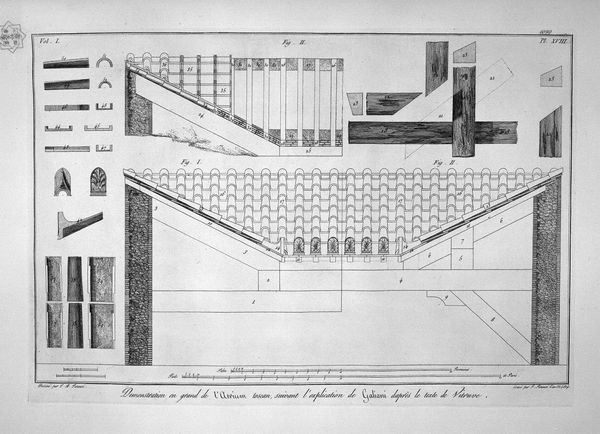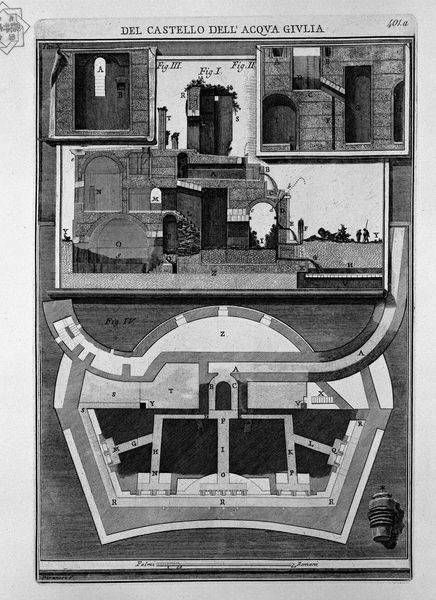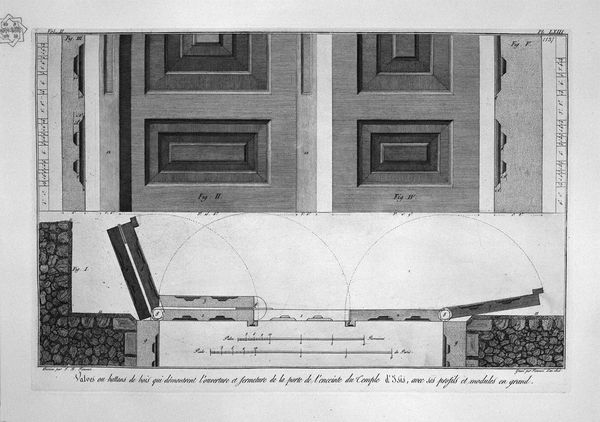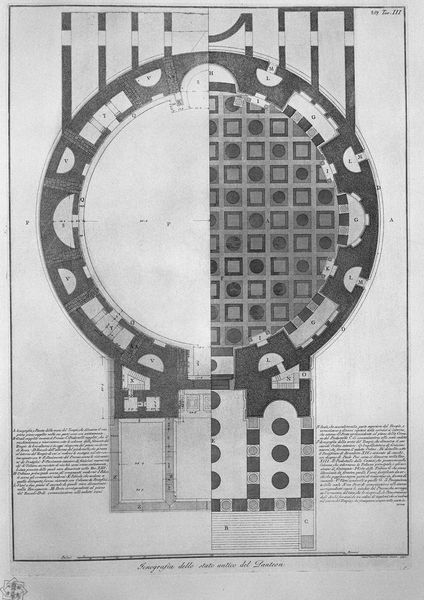
The Roman antiquities, t. 1, Plate XLII. Plan of the Baths of Diocletian 1756
0:00
0:00
drawing, print, etching, engraving, architecture
#
drawing
#
neoclacissism
# print
#
etching
#
greek-and-roman-art
#
perspective
#
geometric
#
ancient-mediterranean
#
cityscape
#
engraving
#
architecture
Copyright: Public domain
Editor: So, here we have Giovanni Battista Piranesi's "Plan of the Baths of Diocletian," made in 1756, a drawing etched into print. I find the level of detail amazing. It's almost overwhelming to look at! How do you interpret this work? Curator: This piece provides a fascinating glimpse into the way eighteenth-century artists and intellectuals viewed and used classical antiquity. Piranesi, as a historian and artist, isn't just presenting an objective architectural plan. He’s also engaging in a cultural project. Editor: A cultural project? Can you explain that? Curator: Absolutely! Consider the context: the rise of Neoclassicism, the Grand Tour... Piranesi's work actively participates in shaping contemporary ideas about Rome’s grandeur. What do you notice about how the baths are depicted? Does it feel like a neutral record? Editor: No, definitely not neutral. The exaggerated perspective and the dramatic shadows make it feel… theatrical almost. It's as if he's staging Roman history for a contemporary audience. Curator: Precisely! Piranesi's “accurate” rendering carries political weight. It suggests a particular narrative about Roman power and its potential relevance for the present. It’s a reminder that representations of the past are always enmeshed in the concerns of the present. Editor: I never thought about historical renderings carrying so much political power! Curator: History is rarely just about "what happened." It's also about how we choose to remember, represent, and ultimately, *use* the past. Editor: This makes me realize how much more goes into these types of images. Thanks! Curator: My pleasure, every image is a world unto itself.
Comments
No comments
Be the first to comment and join the conversation on the ultimate creative platform.


